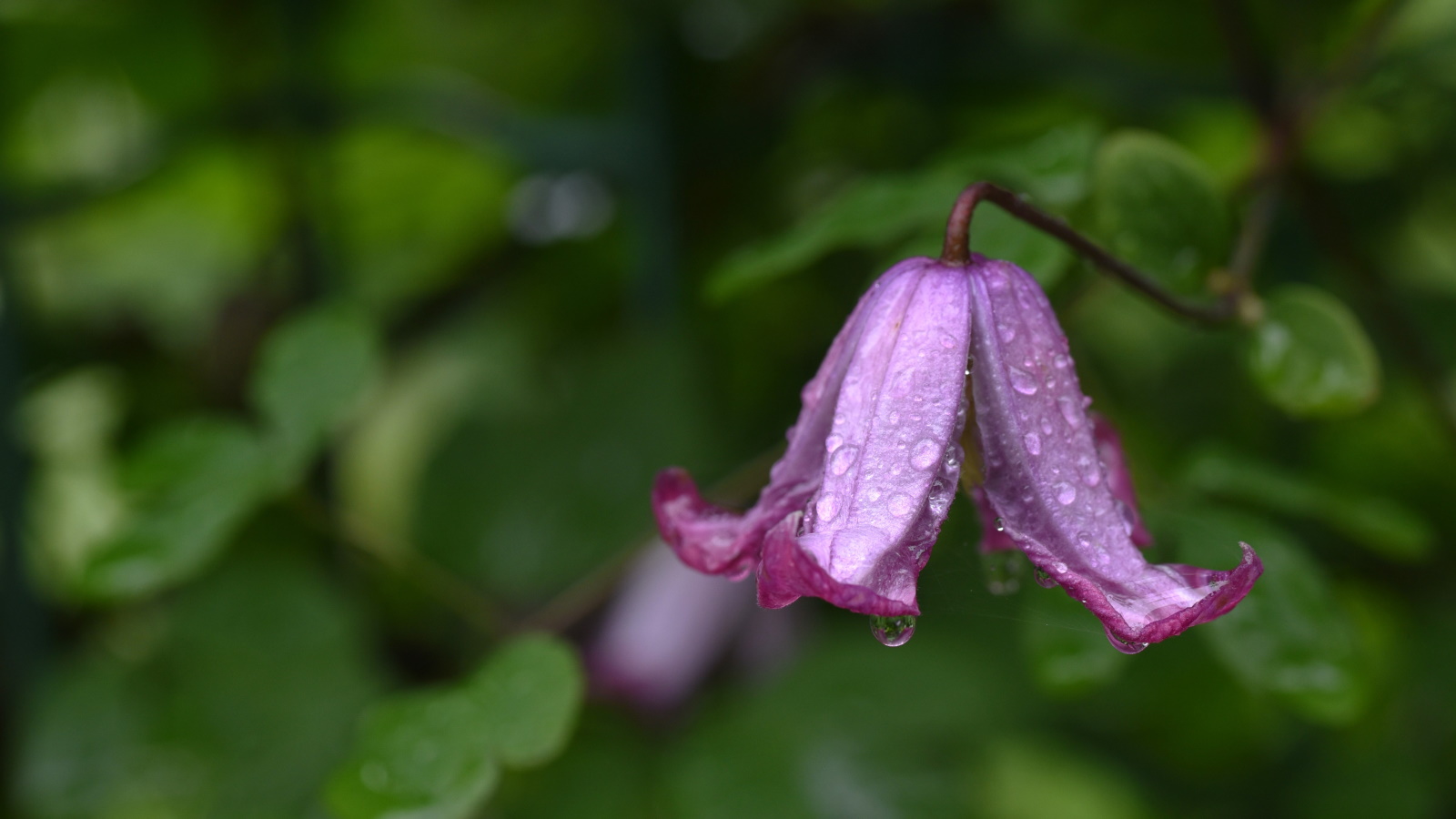Pale leather flowers, or Clematis versicolor, are North American natives that produce unusual blooms during spring and summer. The drooping flowers, I think, appear like Christmas ornaments hanging on a tree. Unlike more familiar species, such as Clematis montana or Clematis armandii, both of which have open flowers, pale leather flowers are prized for these unique, bell-like blooms, making them one the best plants to cover a wall .
Pale leather flowers are found growing across the eastern and southeastern United States, thriving in woodland areas across Pennsylvania, Delaware, Georgia, and throughout the Mississippi Valley. When considering how to grow clematis , while most enjoy full sun and heat, this variety thrives in forests and wooded areas, meaning that it has slightly different growing requirements. So, if you are looking for a native climber to add foliage and flowers to exterior walls, fences and structures, consider this sought-after vine.

Here, one garden expert reveals how best to grow pale leather flowers for colorful blooms that are sure to turn heads. Clematis versicolor is often considered one of the best clematis species, providing year-round interest wherever it is grown. While the blooms of pale leather flowers steal the show in spring and summer, these turn to hairy seed clusters in the fall and winter months, complementing fall foliage displays in the yard.
Things to know about pale leather flowers 'The pale leather flower is one of our finest native plants ,' says plant expert, Katie Sunderlage . 'Found growing across the southeastern and south-central United States, this species grows best in US hardiness zone 5 to zone 9 . 'They generally grow anywhere from 6 to 10 feet tall and 2 to 3 feet wide,' Katie adds, 'but they do have a tendency to climb through other plants, so it is a good idea to give your pale leather flower space and support to grow where you want it to grow.
' For best results, Katie recommends 'planting your clematis in full sun or part-sun-part-shade, with evenly moist but well-drained soil. 'Like all clematis vines, it’s important to keep the roots cool, so protecting the base of your plant with evergreen groundcovers is a good idea.' Operations Manager at Holland Group, managing the customer service department and purchasing.
Katie has been in the green industry since 2005 in the Greater Milwaukee area, earning her degree in Horticulture in 2008. She has been able to share her love for plants working in multiple garden centers, in sales positions and most recently in an online retail platform at Holland Group. Growing advice for pale leather flowers Clematis crispa , commonly known as the swamp leather flower, is another popular variety for its delicate and bell-shaped flowers.
FAQs Generally, this native species is considered tough and pest-free. Aphids and mealybugs can be a cause for concern, but established plants will tolerate and survive any annual pest attacks. Regularly inspect your plant for signs of problems, monitoring for yellowing, browning or wilted leaves.
'Yes, you can grow this clematis as a groundcover plant,' Katie says. 'It will spread throughout a garden bed if it does not have something to climb over or across. Be warned, however, the vines will become entangled with other plants in the area, possibly causing harm, so pruning and upkeep will be required.
' For a unique and pollinator-friendly climber, growing native plants like pale leather flowers will encourage butterflies, bees and hummingbirds to visit your yard. Before you know it, your borders will be humming with wildlife. For more clematis information, see our guide on how to propagate clematis , and grow your climbing plant collection for free this year.
.



















